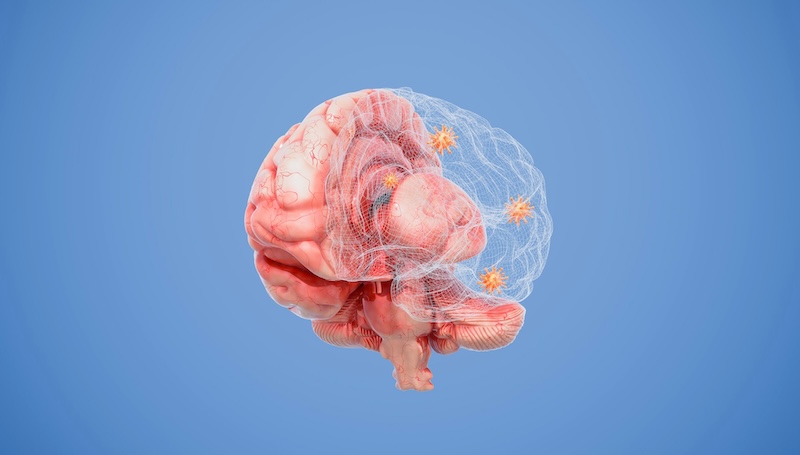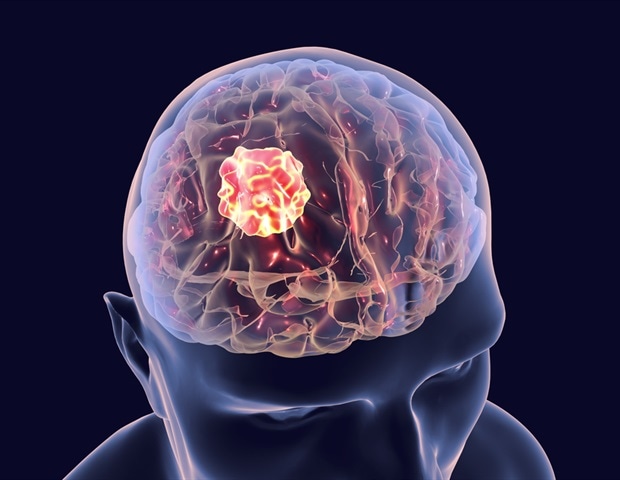Glioblastoma multiforme (GBM) is the most aggressive and common type of brain tumour, affecting nearly 250,000 people worldwide every year. Despite...
Vous n'êtes pas connecté
 - FACTPATROL.COM - A La Une - 22/Aug 08:17
- FACTPATROL.COM - A La Une - 22/Aug 08:17
New hope for glioblastoma multiforme therapy
Glioblastoma multiforme (GBM) is the most aggressive and common type of brain tumour, affecting nearly 250,000 people worldwide every year. Despite decades of research, there is still no cure. Standard treatment involves surgical removal of the tumour, followed by radiotherapy and chemotherapy. While these approaches can temporarily slow tumour growth, the average life expectancy for […]
Articles similaires
New drug could slow aggressive brain cancer recurrence
Glioblastoma is one of the deadliest forms of brain cancer. Even with surgery, radiation, and chemotherapy, it almost always comes back. Most patients...
New drug could slow aggressive brain cancer recurrence
Glioblastoma is one of the deadliest forms of brain cancer. Even with surgery, radiation, and chemotherapy, it almost always comes back. Most patients...
Blocking brain damage may slow aggressive glioblastoma growth
Blocking brain damage triggered by a glioblastoma, an aggressive brain cancer, may slow the growth of the cancer and allow the brain to keep working...
CNS Pharmaceuticals Reports Second Quarter 2025 Financial Results and Provides Corporate Update
Strong cash position of $12.1 million expected to fund operations into the second half of 2026 Driving lead program, TPI 287, towards Phase 2 study...
CNS Pharmaceuticals Reports Second Quarter 2025 Financial Results and Provides Corporate Update
Strong cash position of $12.1 million expected to fund operations into the second half of 2026 Driving lead program, TPI 287, towards Phase 2 study...
Breathing dirty air? It may raise the risk of meningioma
People exposed to higher levels of air pollution may be more likely to develop meningioma, a typically noncancerous brain tumour, according to a large...
Breathing dirty air? It may raise the risk of meningioma
People exposed to higher levels of air pollution may be more likely to develop meningioma, a typically noncancerous brain tumour, according to a large...
Dual immune checkpoint inhibition with radiotherapy does not improve progression-free survival for patients with newly diagnosed MGMT-unmethylated glioblastoma
NRG Oncology recently reported the results of the National Cancer Institute-sponsored phase II/III NRG-BN007 clinical trial showing that combining...
Zombie cancer cells give cold shoulder to chemotherapy
Cancer is the leading cause of disease-related death in childhood. This is in part due to cancer-associated genes called oncogenes that can be found...
Les derniers communiqués
-
Bell announces offering of MTN Debentures
Bell Canada - 12/08/2025
-
From Crew Member to Icon: Shania Twain Gets All Dressed Up with McDonald’s Canada
McDonald's CA - 11/08/2025
-
Genai provides update on status of annual financial statements
Generative AI Solutions Corp - 06/08/2025
-
Partnership marks CosmoGO's entry into sports with content available on its platforms later this Summer
CosmoBlue Media - 18/06/2025
-
Alithya to release fiscal 2025 fourth quarter and year-end results on June 12
Alithya - 26/05/2025
-
Golden Arrow Appoints New President & CEO
Golden Arrow Resources - 26/05/2025
-
CosmoBlue Media confirms Deals with All Major Studios for newly acquired Cineplex Store
CosmoBlue Media - 06/05/2025
-
CosmoBlue Media Expands Global Footprint with Acquisition of Cineplex Store in Canada
CosmoBlue Media - 10/04/2025
-
Tanuka Roy Appointed as General Manager of CosmoBlue Media's Canadian Office
CosmoBlue Media - 04/11/2024
-
Four Seasons to Expand Saudi Arabian Portfolio Alongside Dar Al Omran Company with New Hotel in Madinah
Four Seasons Hotels and Resorts - 07/05/2024




